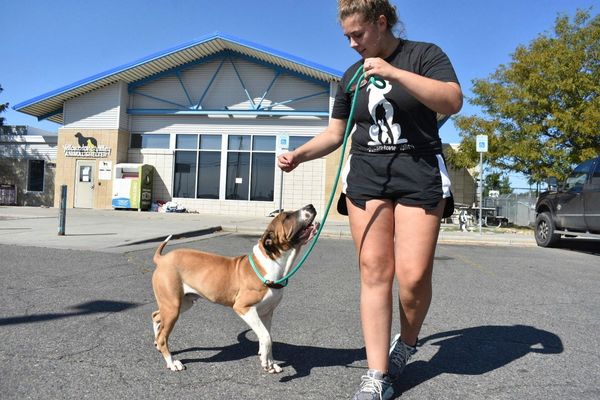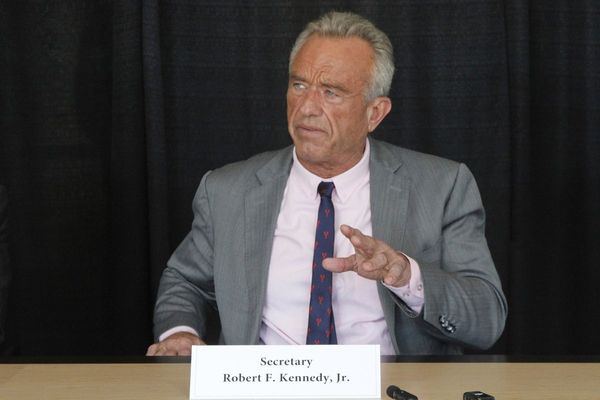
At one point, during my attempted nap, I dig out my phone and look up the dimensions of a coffin.
A standard adult casket, it turns out, rises to 58cm. Gazing up at the whitewashed ceiling of my “nest”, I calculate it offers around 7cm more clearance than the average coffin.
This is the Skynest: touted as a world first design, it’s a set of airborne bunk beds, created by Air New Zealand to “revolutionise” budget air travel. Available from next year, they offer economy passengers the chance to unfold their limbs, extract their necks from inflatable boomerang pillows, and stretch out in luxurious, horizontal style.
A snooze in one of the six beds – stacked tightly in pairs – will set the flyer back NZ$400-$600 for a four hour session. The bunkroom represents a challenge of engineering – fitting six horizontal humans into the space of a small airline galley. In central Auckland, Air New Zealand has built a full mock-up of the design, to test on hundreds of people as market research – and show off to curious reporters who ask if they can have a go.
Air New Zealand has spent 18 months on the research stage, says its head of aircraft programmes, Kerry Reeves, dedicating months to interviews that delve into the motivations and desires of passengers. Some of the findings are recorded in large bullet-pointed lists. Passengers in the upper classes, for example, want to “indulge”, and “escape from madness”.
The needs of budget travellers – also listed next to large bullet points – are more prosaic: to “protect my own space”, “fight boredom” and “feel human”.

The Skynest glows in low-lit pink behind a black curtain. It is not an experience for the claustrophobic. Entering the bottom bunk requires you to get on your hands and knees and crawl, and exiting requires a quick belly-roll and backwards shuffle.
“Of all the demographics of the people that we’ve had in the testing – and it’s quite a few, 100 people,” says Reeves with a note of pride, “we’ve not had one person yet that couldn’t get in.”
Every pod is equipped with its own blanket, pillow, earplugs, and USB charging port. Sleepers will be shielded from their fellow nappers by a transparent net curtain. The net curtains are a legal requirement, Reeve explains: crew must be able to see passengers, to ensure they are not smoking – or engaging in other banned activities.
“They are single occupancy – so one person per pod – for many reasons,” he says, “structural and safety as well as, you know, the other human aspects of that.”
Even if it were allowed, double-occupancy would be a significant challenge. Inside the bed, there is no room to sit up – and lying down, you realise your head is separated by about a foot from the skulls of those sleeping in the bunks above and around you.
The nest has large instructions on its exterior, reminding people of the “dos and don’ts” of its use: do not smuggle in children, dogs, or additional adults. Do not eat snacks in the beds. And, somewhat alarmingly, “Do remember that snoring is perfectly natural. If you’re a snorer, don’t worry. Your fellow nesters have earplugs.”
Reeve says that the company has carried out a wide range of sound testing: pairing up nest-mates and tasking one person with, say, loudly flipping the pages of a magazine, or watching a movie with headphones on. They have not yet tested out a snorer in the unit, he says – but they’re confident that the roar of the plane, a pair of earplugs or noise cancelling headphones will alleviate any issues.
“We’re not saying we can guarantee you sleep for four hours. But it’s horizontal rest,” he says.
In the interests of research, ensconced in my own bunk, I press play on an audio track titled “12 hours of a male snoring” and place that on the bunk below. It rumbles through the nest. After a few minutes, infuriated, I switch it to “calming air plane jet noise” and put on the complimentary eyemask.
Lying back in the pale pink glow, the question of what price to put on such a nap arises. Its cost is yet to be fully determined, although the airline believes it will sit between NZ$400-$600. That’s a stiff jump for those who may already be struggling with the price of airfares – some routes have more than doubled since the pandemic.
It’s a difficult thing to price, Reeves says: $400 sounds like a lot compared with a hotel room, but it’s far less than a business or first class ticket.
Still, despite the aircraft white noise, the proximity to bunks around and above me, as well as the distinctly coffin-like feel of the thing, it’s a relaxing little pod.
A few minutes later, I’ve almost drifted off.







